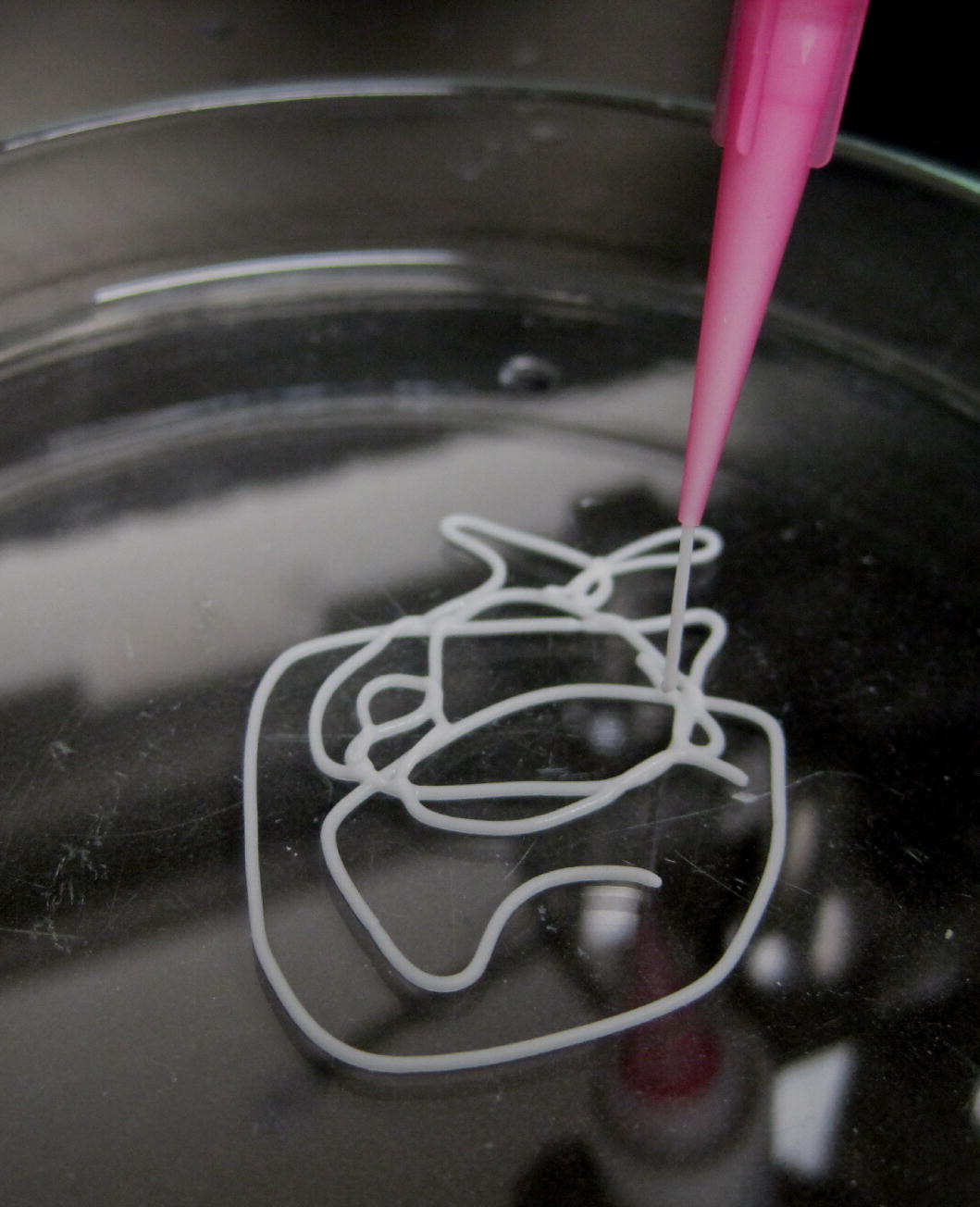New generation biomaterials for bone regeneration should be highly bioactive, resorbable and mechanically strong. Mesoporous bioactive glass (MBG), a novel bioactive material, has been used to study bone regeneration due to its excellent bioactivity, degradation and drug delivery ability, however, the construction of three-dimensional (3-D) MBG scaffolds (as for other bioactive inorganic scaffolds) for bone regeneration remains a significant challenge due to their inherent brittleness and low strength. In this brief communication we report a new facile method to prepare hierarchical and multifunctional MBG scaffolds with a controllable pore architecture, excellent mechanical strength and mineralization ability for application in bone regeneration by a modified 3-D printing technique using polyvinylalcohol (PVA) as a binder. The method provides a new way to solve commonly existing issues for inorganic scaffold materials, for example, uncontrollable pore architectures, low strength, high brittleness and the requirement for a second sintering at high temperature. The 3-D printed MBG scaffolds obtained possess a high mechanical strength about 200 times that of traditional polyurethane foam templated MBG scaffolds. They have a highly controllable pore architecture, excellent apatite mineralization ability and sustained drug delivery properties. Our study indicates that 3-D printed MBG scaffolds may be an excellent candidate for bone regeneration.

New generation biomaterials for bone regeneration should be highly bioactive, resorbable and mechanically strong. Mesoporous bioactive glass (MBG), a novel bioactive material, has been used to study bone regeneration due to its excellent bioactivity, degradation and drug delivery ability, however, the construction of three-dimensional (3-D) MBG scaffolds (as for other bioactive inorganic scaffolds) for bone regeneration remains a significant challenge due to their inherent brittleness and low strength. In this brief communication we report a new facile method to prepare hierarchical and multifunctional MBG scaffolds with a controllable pore architecture, excellent mechanical strength and mineralization ability for application in bone regeneration by a modified 3-D printing technique using polyvinylalcohol (PVA) as a binder. The method provides a new way to solve commonly existing issues for inorganic scaffold materials, for example, uncontrollable pore architectures, low strength, high brittleness and the requirement for a second sintering at high temperature. The 3-D printed MBG scaffolds obtained possess a high mechanical strength about 200 times that of traditional polyurethane foam templated MBG scaffolds. They have a highly controllable pore architecture, excellent apatite mineralization ability and sustained drug delivery properties. Our study indicates that 3-D printed MBG scaffolds may be an excellent candidate for bone regeneration.
